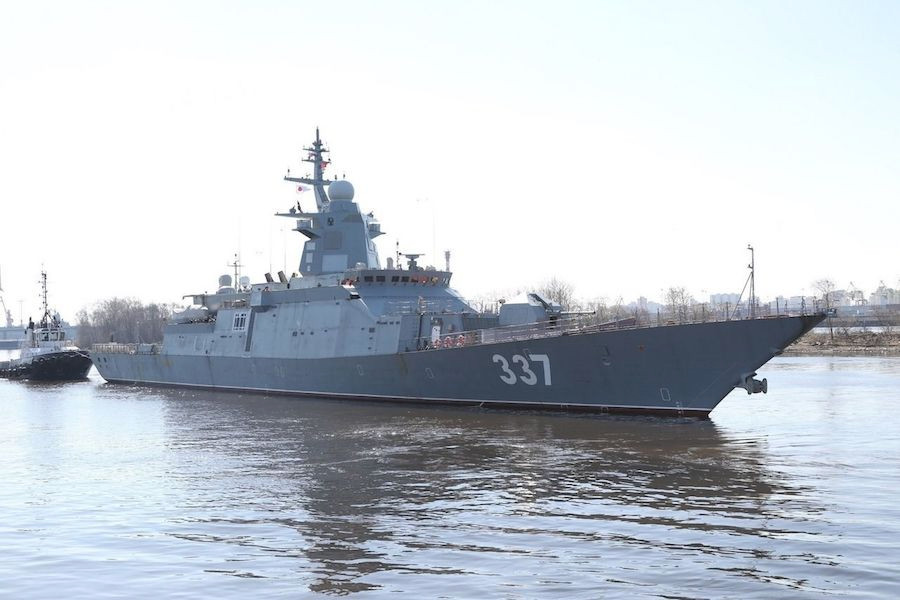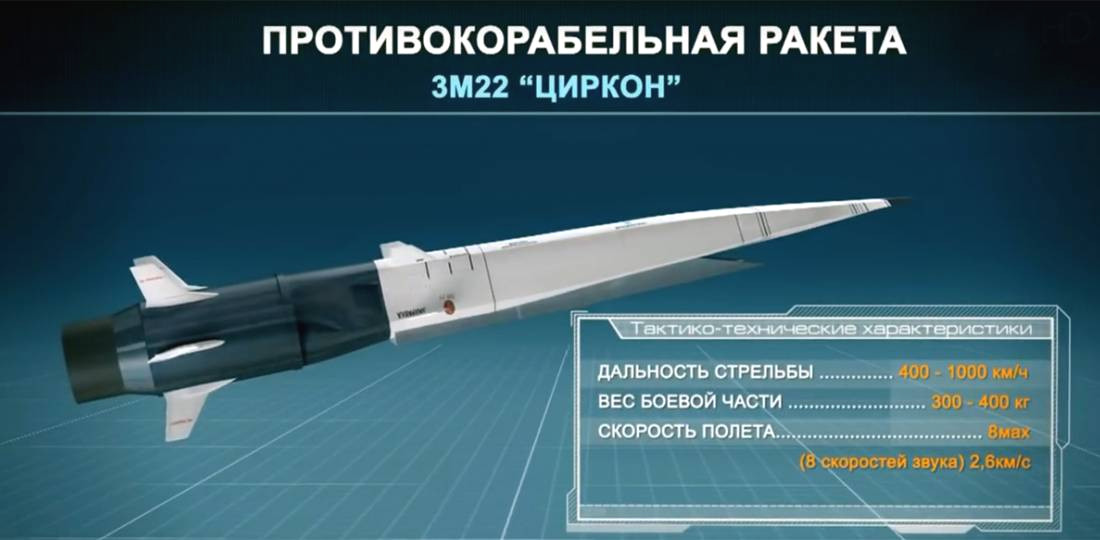Russia says it is upgrading a destroyer and a nuclear-powered guided-missile submarine assigned to its Pacific Fleet so that they will be able to launch the shadowy 3M22 Zircon hypersonic cruise missile, also written Tsirkon, when that weapon becomes available. This comes a month after Russian President Vladimir Putin declared that a new corvette due to enter service soon would also eventually receive this capability. The Kremlin’s public plans to field these missiles are steadily expanding beyond the Kirov-class battlecruisers, which previous reports had indicated would be the first operational launch platforms, and the first test of the missile from a ship is reportedly set to occur before the end of the year.
On Nov. 8, 2019, Russia’s Deputy Defense Minister Alexei Krivoruchko made the announcement about the updates to the Project 1155 Udaloy class destroyer Marshal Shaposhnikov and the Project 949A Oscar II class submarine Irkutsk following visits to shipbuilding enterprises in the country’s Far East region. Marshal Shaposhnikov is due to return to Russia’s Pacific Fleet from its overhaul next year, while Irkutsk is scheduled to go back on active duty in 2022.
“In 2020, we are due to receive the upgraded ship Marshal Shaposhnikov. I am confident that the management [of the Dalzavod Ship Repair Center] will duly fulfill the assigned task and the timeframe of the ship’s delivery won’t be shifted,” Krivoruchko said, according to state media outlet TASS. “The universal launchers, which the ship will receive, will enable it to eventually employ the latest Tsirkon hypersonic missiles.”

The universal launcher in question is the 3S-14 vertical launch system, which can presently fire the P-800 Oniks supersonic anti-ship cruise missile and the Kalibr land-attack cruise missile, among others. Zircon is reportedly sized to fit in these launch cells, as well, making it significantly easier to integrate the weapon onto any surface ship that has or will receive 3S-14s.
The upgrades to Irkutsk may be more substantial, as that submarine, at present, has launchers specifically configured for the older and massive P-700 Granit anti-ship cruise missile, also known to the United States and NATO as the SS-N-19 Shipwreck. However, the Oscar II class submarines do have their launchers installed in long compartments situated between the boat’s inner and outer hulls on each side, giving them their distinctive wide-bodied hullform. This would provide ample room for the installation of new systems in place of the existing P-700s.

The first-in-class Project 20385 corvette Gremyashchiy, which the Russian Navy expects to formally commission and assign to the Pacific Fleet next month, also has the 3S-14 universal launchers. So, it was perhaps not surprising when Russian President Putin said that “it will certainly have Tsirkon” when he toured the ship during a visit to Russia’s Kaliningrad enclave on the Baltic Sea in October.

Russia’s Kirov class nuclear-powered battlecruiser Admiral Nakhimov is also undergoing a deep refit that will include the installation of 3S-14 arrays. Her sister ship, Pyotr Veliky, or Peter the Great, is set to go in for a similar overhaul once the work on Nakhimov is done. Prior to these more recent announcements, the Russian Navy had identified these ships as among the first ones that would be equipped with Zircon, though it seems to be increasingly unlikely that this will be the case. Nakhimov‘s time in drydock has been extended more than once and she is scheduled now to rejoin the fleet in 2021.

The fielding plan for Zircon will, of course, all depend heavily on how fast Russian can get the weapon itself ready for operational use. The missile, no conclusive pictures of which exist, has reportedly been in development since at least the early 2010s.
Russian media routinely uses graphics depicting a so-called “waverider” hypersonic missile, similar to the U.S. Air Force’s X-51 Waverider, when referring to Zircon. Systems in this configuration use rocket booster to propel the actual vehicle to a sufficient altitude and speed, after which its own air-breathing scramjet engine takes over. As its name implies, the waverider configuration is designed to use its own shockwaves to generate additional lift to keep it stable and airborne.

Actual details about Zircon, or its capabilities, remain extremely limited. There are unconfirmed reports that the missile may employ a “plasma stealth” system, which would involve creating a close of radar-absorbing ionized particles around all or a portion of the weapon. You can read more about this in this past War Zone feature. Hypersonic weapons already present a major challenge to existing air and missile defense systems given how fast they fly and their ability to rapidly and unpredictably change course on their way to the target. Their high speed also limits the amount of time an opponent has to detect and then react, at all.
In February 2019, Putin offered what appeared to be some of the first pieces of substantial information about the weapon when he disclosed that it had a speed of up to Mach 9 and a range of 620 miles. If true, this would mean that Zircon would be able to strike targets out to its maximum range within around just five minutes of launch.
At that time, Putin also confirmed that it would be able to strike targets at sea and on land, rather than being a pure anti-ship weapon as earlier reports had indicated. In March 2019, an unnamed Russian defense industry source told TASS that the first test of the missile from an actual ship would occur “at the end of 2019” and that the first-in-class Project 22350 frigate Admiral Gorshkov would fire the weapon.
It remains to be seen just what Zircon’s capabilities might be when, and if, it finally enters service and just how widely Russia will field the weapon, no matter how many ships and submarines have the ability to fire it. It is certainly true that Zircon is part of a larger modernization effort going on in the Russian military that is largely aimed at challenging the supremacy of near-peer opponents, primarily the United States. By every indication, the program enjoys support at the highest levels, making it less likely to fall victim to any potential budget cuts, which have impacted a significant number of other major Russian defense programs in recent years.
If nothing else, the Russians are clearly interested in keeping the weapon, and the threat it presents to targets, even those shielded by extensive air and missile defenses, front and center in the minds of potential adversaries.
Contact the author: joe@thedrive.com
